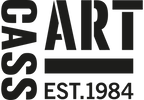
Your incredible winning piece, Ada, is inspired by Ben Enwonwu’s African Mona Lisa and tells a powerful story of resilience and heritage. What drew you to Ada’s story, and how did you approach capturing her spirit in your work?
I was drawn to Ada’s story in friendship and our mutual heritage. Ada’s grandparents were enslaved people who escaped plantation bondage. They were known as Jamaican Maroons, descended from Africans who freed themselves from slavery and established self-sufficient communities in Jamaica’s mountainous interiors, mainly in the Eastern parishes. What many fail to realise is that Africans constantly fought against their enslavement. Indeed their constant revolt disrupted the sugar economy in Jamaica and made it less profitable in Britain. Ada’s spirit is a legacy of resistant resilience in the face of unimaginable brutality. We must not fail to acknowledge and feel the immense power of her beauty and grace in our own continuing struggle for freedom and equality.

Your work has a strikingly unique painterly style with such dynamic brushwork. Could you take us through your process—how do you build up a piece from start to finish, and are there any unique techniques you’ve developed along the way?
I drift, not to lose myself, but to find a meditative space, where I can wait patiently. I read, research, take photos, sketch, have conversations, and listen to music. I try to experience and reflect on my life and the way it intersects with the lives of others. This simple openness and curiosity creates surprise and discovery of hidden histories, unseen faces and marginalised voices. It is a process where understanding leads to connection between people known and unknown by daring to invest my heart with theirs.

In your work you explore themes of race, history, and representation. How does your own background and lived experience influence the way you tell these stories through art?
Inevitably my work is partly shaped by my background being black, working class and neuro-divergent. I’m a witness of something that I’m also subjected to: inadequate support for services for autistic children and adults which can lead to health, economic and wealth inequality and the constant presence of systemic and structural racism. Part of my process is making what’s unbearable bearable through the aesthetic experience by making the darkness of lived moments visible in order to understand and begin a process of healing.



You work across multiple mediums, including painting, drawing, photography, and collage. How do you decide which medium best serves the message of a particular piece?
I don’t really choose a medium, in terms of creating a message. Sometimes a painting may contain a collage, sketches and photos. Painting is an open concept, which is exciting because it is about total freedom and endless possibilities, when you are willing to become the medium.

You’ve spoken about art as a reflective space for people of colour. What conversations do you hope Ada and your wider body of work spark among audiences?
I would like people to realise that separateness is an illusion and that we are all connected by our humanity which is the source.

Could you talk us through what your go-to art materials are and why they’re integral to your practice?
I particularly like Blockxx oil paint, it’s very earthy and naturalistic and it’s quite liquid and has a slight lustre on the surface. Although I use literary anything as well to bring about an image from golden acrylic to cheap poster paints. I am always trying to subvert my own rules and methods of making.

Thanks so much for taking the time to speak to us today! Are there any upcoming projects or themes you’re excited to explore in your future work?
I want to continue to explore as I’m really excited that I’ve finally found, after many years, a new way to paint black and brown flesh beyond European traditions of realist painting. It’s exciting to see how this is going to evolve.
Be sure to follow Reuben on his Instagram @reubenmurraypractice
